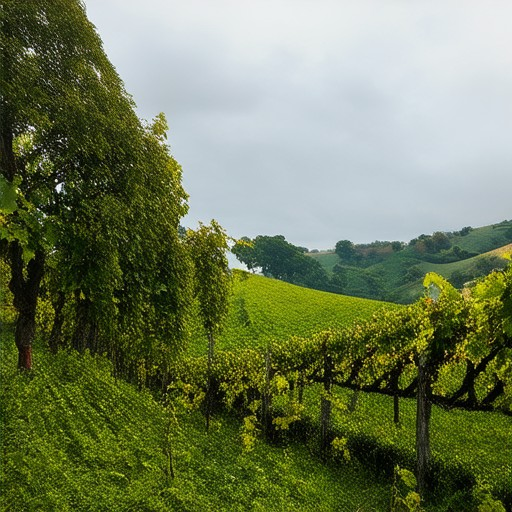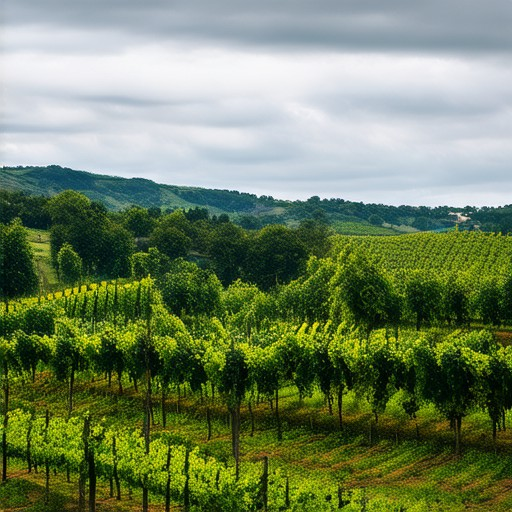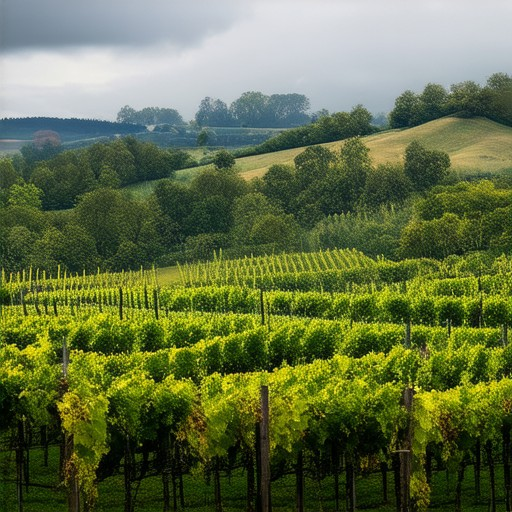The art of wine and nature pairing is a captivating exploration of how the world’s finest beverages harmonize with the beauty of nature, creating unforgettable sensory experiences. From the golden rule of flavor matching to the best pairings for every occasion, this guide delves into the intricate dance between wine and its natural surroundings. Discover how seasonal dishes and specific wine varieties come alive when paired thoughtfully, and learn about the vibrant world of wine pairing events that elevate dining experiences. Whether you’re curious about natural wines or looking to adopt eco-friendly practices, this article offers insights into the latest trends and innovations in wine and nature pairing. Join us as we uncover the secrets behind the perfect pairings, from technological tools to sustainable practices, ensuring your wine experiences are as enriching as the landscapes they embrace.
Key Takeaways
– Versatile Pairing: Natural wine effortlessly complements a wide range of foods, from cured meats and fresh seafood to bold vegetables and fruit desserts.
– Food Categories: Pair natural wine with cured meats like prosciutto, fresh seafood such as salmon, and bold veggies like arugula for a flavorful match.
– Pairing Tips: Optimize your experience by considering wine acidity—lighter wines pair well with acidic foods, while richer wines stand up to hearty dishes.
– Trend Factors: The rise of natural wine is driven by health-conscious choices, sustainable practices, transparency, terroir expression, and artisanal craftsmanship.
– Explore Further: Discover the perfect pairings and learn more about natural wine’s growing popularity at Fine Vines’ Wine Pairing Guide.

The Golden Rule of Wine Pairing
The golden rule of wine pairing revolves around matching wines to foods based on shared flavor profiles, texture, and complementary elements. While the general idea is that red wines pair well with bold, hearty proteins like red meat and dark chocolate, and white wines often complement lighter dishes like fish, chicken, and vegetables, there’s much more nuance to the process.
Here are the key factors to consider when crafting the perfect wine and food pairing:
- Flavor Profiles: Wines and foods that share similar flavors tend to work best together. For example, the earthy, smoky notes of a Syrah pair beautifully with the charred, meaty flavors of grilled steak. On the other hand, the fruity, citrusy notes of a Chardonnay align well with the freshness of seafood.
- Acidity Levels: High-acid wines like sparkling wines or young whites (Chablis, Sauvignon Blanc) pair well with acidic foods such as tomatoes, citrus fruits, and sharp cheeses. Low-acid wines, such as sweet Rieslings or dessert wines, complement rich, sweet desserts or spicy dishes.
- Tannins and Texture: Wines with high tannins, like Cabernet Sauvignon or Barolo, pair nicely with foods that have firm textures, such as braised meats or hard cheeses. Soft, low-tannin wines like Pinot Noir or Gamay are ideal for delicate dishes like salmon or risotto.
- Sweetness and Balance: Sweet wines, such as Icewine or Sauternes, are wonderful with rich, sweet desserts or savory dishes with caramelized sugars, like foie gras. Dry wines, on the other hand, balance well with spicy or bitter foods, such as curry or black pepper dishes.
- Body and Weight: Full-bodied wines like Bordeaux or Napa Cabs pair well with hearty, rich dishes, while lighter, more aromatic wines like Gewürztraminer or Moscato complement delicate, floral foods like Asian cuisine or herbal salads.
By considering these factors, you can create a wine pairing experience that is both memorable and harmonious. Whether you’re hosting a dinner party or simply looking to elevate your next meal, paying attention to these elements ensures that your wine selections will shine alongside your favorite dishes.
For more expert tips and detailed wine pairing guides, visit our wine pairing guides section on Fine Vines.
Best Wine Pairings
Pairing wines with food can elevate your dining experience, but it requires understanding which wines complement each other best. Here’s a guide to perfect wine pairings:
- Sparkling Wines & Champagne : Ideal for celebratory moments or appetizers. Brut Prosecco pairs well with antipasto dishes, while Bellini is perfect for fruity desserts.
- White Wines : Crisp and refreshing, these wines are great with light meals. Dry Riesling is excellent with Asian cuisine, while Chardonnay complements grilled fish and seafood.
- Red Wines : Rich and bold reds are perfect for hearty meals. Cabernet Sauvignon pairs beautifully with steaks and roasted vegetables, while Merlot is great with pasta dishes.
- Sweet Wines : These are best enjoyed with desserts. Sauternes or Dessert Wines are perfect partners for tiramisu or chocolate-based desserts.
- Fortified Wines : Port and Sherry are excellent with blue cheeses, cured meats, or rich, savory dishes like truffle risotto.
Remember to always consider the wine’s acidity, body, and flavor profile when selecting a pairing. Experimenting with different combinations can also lead to exciting discoveries!
For more expert wine pairing tips and detailed guides, visit our wine pairing tips section.

What is a Wine Pairing Event?
A wine pairing event is a gathering where participants enjoy fine wines paired with carefully selected foods to enhance the dining experience. These events often feature expert-led tastings, educational sessions, and opportunities to socialize while exploring the art of wine and food complementarity.
Benefits of Attending a Wine Pairing Event
- Learn about wine regions, grape varieties, and tasting techniques.
- Discover how different foods pair perfectly with various wines.
- Network with wine enthusiasts and professionals.
- Enjoy exclusive access to premium wines and gourmet dishes.
How to Get the Most Out of a Wine Pairing Event
- Arrive early to fully experience the event layout.
- Take notes on favorite wines and pairings for future reference.
- Ask questions during dedicated Q&A sessions.
- Pace yourself to savor each wine and pairing.
Step-by-Step Guide to Wine Tasting
- Look at the wine’s color and clarity.
- Swirl the wine to assess its body and texture.
- Sniff the aroma to identify fruit, floral, or spice notes.
- Taste the wine, noting its acidity, sweetness, and tannins.
- Pair the wine with the food based on these characteristics.
Frequently Asked Questions About Wine Pairing Events
- Are there age restrictions? Most events may require guests to be 21 or older.
- Can I bring my own wine? Some events allow it, while others provide only curated selections.
- What should I wear? Business casual to formal attire is typically appropriate.
- How long do events usually last? Duration varies, but many span several hours.
Conclusion
A wine pairing event is a unique opportunity to deepen your knowledge of wine and food while enjoying a luxurious experience. Whether you’re a seasoned enthusiast or new to the world of wine, these events offer something for everyone.

What to Pair with Natural Wine?
Natural wine, characterized by its minimalist production methods and vibrant flavors, offers a unique pairing opportunity with a variety of foods. Here’s a guide to complementary dishes and ingredients:
- Cured Meats & Cheeses : Natural wines pair exceptionally well with cured meats like prosciutto or chorizo, as well as robust cheeses such as Parmigiano-Reggiano and Pecorino Romano. These foods provide a savory contrast to the wine’s acidity and herbal notes.
- Fresh Seafood : Optimal choices include fresh fish like trout, salmon, and sardines. Their mild flavors complement the wine’s brightness, while the briny qualities of seafood enhance the wine’s minerality.
- Bold Vegetables : Vegetables like arugula, radicchio, and kale bring bold, peppery flavors that harmonize well with natural wine’s herbal characteristics.
- Charcuterie Boards : A traditional charcuterie board featuring a mix of sweet, savory, and tangy components works beautifully with natural wines, balancing their complex profiles.
- Fruit Desserts : Fresh fruits such as strawberries, peaches, and melons pair wonderfully with natural wine due to their natural sweetness and citrus-like notes.
General Pairing Guidelines
When pairing with natural wine, consider the wine’s acidity and alcohol level. Lighter wines may benefit from acidic foods like tomatoes or citrus, while richer, more complex wines can stand up to hearty dishes like roasted meats or stews.
For a refined experience, try pairing natural wine with live-fire-cooked dishes, as the smoky and charred flavors enhance the wine’s natural character.
Explore more wine pairing ideas and expert insights on Fine Vines’ Wine Pairing Guide .
Best Foods to Pair with Natural Wines
Natural wines, characterized by their minimal intervention and lower alcohol content, pair exceptionally well with a variety of foods due to their subtle flavors and acidity. Here’s a guide to optimal food pairings:
- Fruits: Citrus fruits like lemon, lime, and orange complement the bright acidity of natural wines. Herbs such as thyme and rosemary also pair well, enhancing the earthy notes.
- Cheeses: Soft cheeses like Brie and Camembert are excellent choices, as they add richness without overpowering the wine. Goat cheese is another versatile option.
- Vegetables: Tomatoes, bell peppers, and zucchini are great vegetable options. Arugula, with its peppery flavor, also works well.
- Meats: Lean meats such as chicken and pork pair beautifully with natural wines. Fish like salmon stands up well to the wine’s complexity.
- Desserts: Light and fruity desserts like berries and fruit tarts are ideal. Tiramisu, though traditionally richer, can be adapted to suit natural wines.
When seasoning, opt for herbs like thyme or rosemary to enhance the wine’s aroma without overwhelming the dish. Experiment with these pairings to discover your personal favorites!

Why is Natural Wine So Trendy?
Natural wine has gained significant popularity due to its alignment with modern consumer values and preferences. Here are the key reasons behind its rise:
- Health Consciousness: Many natural wines are organic or biodynamic, reducing chemical interventions and synthetic additives. This appeals to consumers seeking healthier options.
- Sustainability: Biodynamic and organic practices promote environmental health, making natural wine production more eco-friendly and appealing to environmentally conscious individuals.
- Transparency: Natural winemaking often involves fewer unknowns, as winemakers are more transparent about their processes and ingredients, fostering trust among consumers.
- Terroir Expression: Natural wines often showcase the unique characteristics of their regions, known as terroir, offering a genuine sense of place and authenticity.
- Craftsmanship: The emphasis on natural processes and traditional methods highlights the artistry and skill of winemaking, appealing to connoisseurs and casual drinkers alike.
Fine Vines stands at the forefront of this movement, combining meticulous craftsmanship with a commitment to sustainability. Our wines are crafted with care, reflecting the unique terroir of our vineyards while adhering to organic principles. Explore our collection to experience the difference of natural wine, designed for those who appreciate the finer things in life.



0 Comments